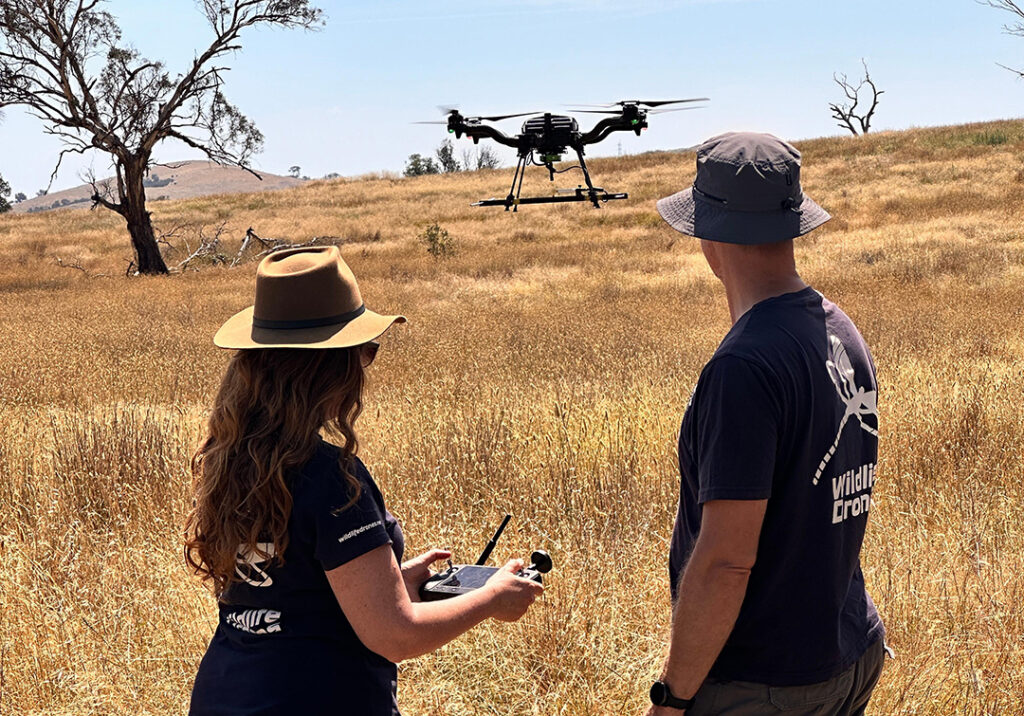Craig Sholto-Douglas was looking for a white rhino and her calf. The two animals, members of a near-threatened species prized by traditional Chinese medicine for its horns, made inviting targets, as the mother’s smart band had come off her leg.
Sholto-Douglas’ primary focus as environmental manager at Kwandwe Game Reserve in South Africa’s Eastern Cape province is protecting black rhinos and white rhinos. Poaching is the biggest threat.
“It’s actually at its worst, partially because it’s a different type of poacher that we’re dealing with,” he said in a 2024 video. “They’re coming prepared to kill not just one or two rhinos, but to really hammer areas systematically.”
Poachers killed an estimated 420 rhinos in South Africa alone in 2024, according to the International Rhino Foundation. Fueled by traditional Chinese medicine (TCM) markets, in which rhino horns are worth as much as $400,000 per kilogram, rhino poaching in South Africa rose by 9,000% between 2007 and 2022, according to the Air Shepherd program, which uses drones to protect African rhinos.
After years of struggling to protect rhinos from sophisticated poaching syndicates, Sholto-Douglas believes drones and smart collars are revolutionizing conservation. His team uses both as part of an integrated rhino response system.
“[A smart collar] is not just a GPS tracking device,” he explained. “There’s artificial intelligence embedded in there with a machine-learning algorithm which learns the baseline behavior of each individual rhino. When there’s abnormal data from that baseline, it triggers an abnormal behavior alert.”
Cue the drones.
“It automatically flies to that location where it sends us a live feed of what’s going on,” he said. “It might be that an animal is down, but their poachers are still there. … Whether it’s a poaching incident or an injury, it allows us to direct and keep our guys on the ground, safe.”
In international black markets, rhino horns have outpaced the value of elephant ivory and gold. However, scientific studies show that the rhino horn powder used in TCM products lacks any medicinal value. But demand is driving an epidemic of poaching.
“South Africa’s Kruger National Park is ground zero for poachers,” Crawford Allan, spokesman for the World Wildlife Fund’s crime technology project, said in a 2024 blog post. “There are 12 gangs in there at any time. It’s a war zone.”
Drones allow park rangers and researchers to monitor much larger areas, said Mark Green, president emeritus of the Wilson Center.
“Unlike land-bound patrols trying to make their way through the bush, drones aren’t deterred or slowed by difficult terrain,” he wrote in an April 1 blog post. “Since more and more drones are being equipped with infrared cameras, they can more effectively monitor rhinos — and poachers — in the dark, when most poaching occurs.”
Drones have helped Kruger National Park detect poachers. Rangers recently noticed 55 intruders in one month by monitoring a trail used by poachers to enter the park. As a result, poaching decreased, as did attacks on animals and incidents involving park personnel.
Damien Mander, founder and CEO of the International Anti-Poaching Foundation, recounted an African success story in which a drone located the dying embers of a poacher’s campfire early one morning.
“I wonder how long it would have taken to locate this well-hidden camp without the drone,” he told Airborne Tactical Advantage Co. for a blog post. “A week earlier, a similar raid ended in a firefight with one ranger shot through the shoulder and one wounded poacher fleeing back to Tanzania.”
Having seen firsthand the benefits of AI-powered drones and smart collars in combating poachers, Sholto-Douglas now has hope for wildlife conservation on the continent.
“In Africa, reserves are all faced with the same problem,” he said. “We’ve tried for a number of years to find a system that works, and we really believe that we’ve got one now.”

